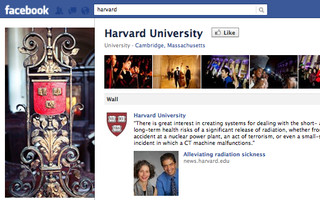There you are, sitting with your bros in a totally normal way entranced by the latest episode of Gossip Girl and maybe eating a Luna Bar:
[A door suddenly opens.]
Serena: “O! M! G! Dan! What are you doing making waffles with Blair? How could you!?”
Dan: “Serena, just let me explain…Georgina’s back in town!”
[Text messages all around. Everyone looks at a picture on their phone of Chuck walking a dog. Serena and Blair gasp.]
Dan: “See, I told you she’s back! By the way, I’m a bestselling author now. Isn’t that neat?”
Gossip Girl: “Uh oh. Looks like Lonely Boy’s got some explaining to do. XOXO, Gossip Girl.”
[Fade to darkness.]
Announcer: “IF YOU HAVE AN ERECTION THAT LASTS FOR MORE THAN FOUR HOURS, CALL A DOCTOR IMMEDIATELY!”
Needless to say, your shock at the new turn of real-life events on the Upper East Side is cut brutally short as you’re forced to fumble for the remote and mute the salesman’s screaming. After taking a bit of consolation in the fact that there might indeed be other men watching, you mutter to yourself and wonder why advertisers insist on ruining every good commercial with an offensive decibel level. Sound familiar?
Luckily, 2012 will be a good year for TV viewers. In what is the only bill to successfully pass through Congress in recent memory, the almost cleverly named Commercial Advertising Loudness Mitigation Act became law in December 2010. It mandates that a commercial can only be as loud as the mean volume of the program it is interrupting. Using some smart science that involves packing the frequencies that humans hear best, advertisers can still give their commercials a slight perceived boost, but technically and practically, CALM will make this pet peeve a thing of the past. The Federal Communications Commission finally adopted the new rules in December 2011 and gave broadcasters another year to comply. Even though CALM won’t be enforced until December 2012, many broadcasters have already deployed its required A/85-decibel standard ahead of the crackdown—a noticeable relief for couch spuds everywhere.
Unluckily, no one my age is an actual TV viewer. Live primetime is pretty blasé—an antiquated “whatever” for old people who like to be programmed by the programmers. Having grown up during the first coming of the truly personalized digital media experience, our generation demands way more choice and control than the last couple generations of counter-culture youth who thought they were demanding those things. And, as before, big business has gradually learned that mimicking or absorbing the startups that cater to our lucrative new needs are the only ways to stay relevant in the long term.
In the case of video, on-demand and digital are the way forward, and all the major content providers have been frantically racing to build a winning solution. Somehow, despite all of their experience delivering content, they’re forgetting to transfer the technological good practice they learned from old media to new media. Even as the Comcasts and Disneys of the world retreat from loud commercials on the tube, they appear to be running straight for them online. In my own—admittedly anecdotal—experience, commercial breaks that divvy up web-served content seem to be getting frustratingly louder by the day.
There’s something pretty crazy about this. Anyone can recognize that many of the consumer pressures that come to bear on video are the same whether it’s delivered via the Internet or over the airwaves. Consumers still want to laugh at a comedy, get high and watch Planet Earth, cry when Mufasa dies, and not deal with obnoxiously loud commercials.
What makes this more absurd is that CALM’s A/85 standard was painstakingly developed and published by the Advanced Television Systems Committee—an industry organization that includes all the major broadcasters—way back in November 2009 before CALM was even on the table. They did so specifically to combat the “audio loudness differential” of “interstitial content” that was annoying their customers. Could this bit of self-regulation indicate a long-standing commitment and willingness to accommodate consumer preference without being forced? Yes, indeed. So what gives?
There could be any number of perfectly reasonable explanations, but even so, my point is a much broader one. With the web being the future and all, the willingness of content providers to hold their services to a lower standard online than they do offline is unsettling. Advertisement volume is one example of something online that’s just worse than its big offline brother for no apparent reason.
The texture of every subpar online content experience might benefit if big publishers did more to come together and democratically define, adopt, and continually improve online media standards that parallel existing, offline ones. Doing so would iron out unpopular incongruities between new and old and put a framework in place to address new problems as they arise. Failing this, Big Media will just waste a lot of time and money relearning what it already knows.
Karthik R. Kasaraneni ’12, a former Crimson associate editorial editor, is a chemistry concentrator in Lowell House. His column appears on alternate Thursdays.
Read more in Opinion
No Bad BloodRecommended Articles
-
Recap: "Enough About Eve" and Vanessa too, please!We're back again for another riveting round of Gossip Girl storyline ratings. Last night's episode was actually pretty hilar. So,
-
ART's "Best of Both Worlds" Unfortunate MisnomerThough it offers a wonderful musical experience, “Best of Both Worlds” ultimately demonstrates the potential pitfalls of an emphasis on active spectatorship.
-
"Skins" WinsAlthough the show may very well portray teenage sexuality in a questionable manner, MTV should not censor it.
-
 Harvard's Facebook Page Totals One Million Likes
Harvard's Facebook Page Totals One Million Likes -
 Were You Aware? Four Upcoming Jennifer Lawrence Films...Maybe
Were You Aware? Four Upcoming Jennifer Lawrence Films...Maybe -
McEwan's Latest a Complex MetanarrativeMcEwan devotees will see a similarity between the endings of “Sweet Tooth” and that of “Atonement,” but McEwan does not pull off “Sweet Tooth” as gracefully as he finished “Atonement.”













